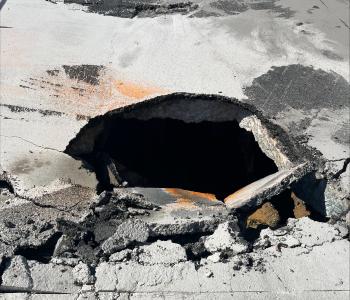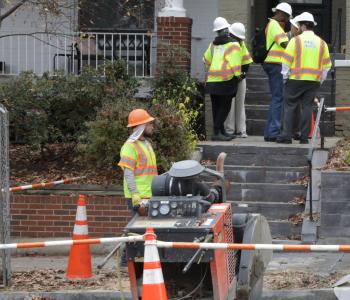DC Water Advances Plans to Control Combined Sewer Overflow to Rock Creek and Potomac River
DC Water is moving forward with plans to control combined sewer overflows (CSOs) to Rock Creek and the Potomac River after receiving approval from the Environmental Protection Agency (EPA).
DC Water is implementing the Clean Rivers Project to control CSOs to our waterways and to improve water quality. The entire Clean Rivers Project will provide a 96% reduction in CSOs system-wide when completed.
Last year, DC Water submitted to EPA the Practicability Assessments for both the Rock Creek Green Infrastructure (GI) and Potomac River GI projects, as required under the terms of the 2016 Amended Consent Decree. The Practicability Assessments evaluated the first set of GI projects in both the Rock Creek and Potomac River sewersheds and identified DC Water’s proposed plan to control CSOs to these waterbodies. In both cases, EPA has agreed with DC Water’s assessment of GI and approved the plans to control CSOs to both waterways.
These plans allow for CSO control to be achieved in a financially responsible and effective manner. For the Potomac River sewershed, DC Water will plan, design, and construct the Potomac River Storage/Conveyance Tunnel with a total storage volume of not less than 40 million gallons. For the Rock Creek sewershed, DC Water will utilize a “hybrid” approach for controlling CSOs that blends the best of gray and green technologies to include:
- Constructing GI with a capacity of 3 million gallons (equivalent to runoff from 92 impervious acres from a 1.2” storm). Rock Creek Project No. 1 which manages 0.9 million gallons of stormwater with GI has already been completed.
- Constructing a 4.2 million gallon storage facility controlling the Piney Branch CSO outfall.
- Crediting stormwater controls already constructed in the sewershed pursuant to the District’s Stormwater Regulations with a capacity of 2.3 million gallons. These controls have been paid for by public and private entities in the Piney Branch sewershed and crediting them is provided for in the Consent Decree.
These plans will be implemented by early 2030, the same schedule deadline in the 2016 Amended Consent Decree.
David L. Gadis, DC Water Chief Executive Officer and General Manager, stated, “DC Water remains dedicated in finding the best solutions that meet the needs of our ratepayers. The hybrid approach for the Rock Creek Sewershed continues to support and advance DC Water’s commitment to the success of green infrastructure in the District of Columbia and beyond and extending the Potomac River Tunnel was the most practical and cost effective approach to addressing CSOs in the Potomac sewershed.”
“EPA supports DC Water’s effort to address combined sewage overflows in the District of Columbia by combining the best characteristics of both green and gray infrastructure for a solution in Rock Creek,” said EPA Mid-Atlantic Region acting Regional Administrator Diana Esher. “This effort will enhance the beauty and improve water quality in waterways around our nation’s capital.”
A copy of the Rock Creek and Potomac River Practicability Assessments can be found on DC Water’s website at www.dcwater.com/green. DC Water is currently finalizing the design of the next GI project in Rock Creek as well as the Potomac River Tunnel. Check www.dcwater.com/green and www.dcwater.com/prt for updates.







